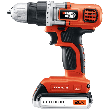How to Use a Drain-and-Trap Auger
Written by Lee Wyatt (last updated July 1, 2020)
If you have a slow draining sink, toilet, or tub, or even a complete blockage, you can easily find yourself with a potentially messy problem. While you can always use a plunger, an alternative tool that you can use is the drain-and-trap auger, commonly referred to as a snake. However, if you do not know how to use a drain-and-trap auger properly you can create more of a mess than you would believe. Follow these steps to ensure that you use one properly.
- Turn off the water. Before you can begin using a drain-and-trap auger on your clogged pipes, you will need to shut off the water. This will help prevent any accidents, or messes from cropping up while you do your work. The best way to do this is by shutting the water off to that particular section of pipes.
- Remove the pipe. Once you have the water shut off, you can then begin removing the pipe. The first thing that you need to do is start unscrewing the straight sections of pipe that attaches to the bend (or trap) in the pipes. When you have the threads nice and loose, but not completely removed, place the bucket under the pipes, and then continue to remove the pipe. The bucket will catch any remaining water in the drain, and not make a mess. Set the pipe into the bucket, and then set both aside, out of the way.
- Begin feeding the snake. Unloose about three feet of the snake, and put on some work gloves. The gloves will help protect your hands while you are feeding the snake, and keep you from getting too dirty. Place the end of the drain-and-trap auger into the drain, and slowly work it forward.
- Slowly work the snake. Turn the hand crank on the auger, and it will help to turn the auger as you slowly feed it through the pipe. This will allow you to slowly work through any clogs that you find. Be very careful as you do this that you do not force the snake through any blockage, or you can find yourself potentially breaking the pipes. Continue the process until you have completely run out the snake.
- Retract the snake. Once you have fully extended the snake, retract the auger. Do this by basically doing everything you did earlier, but in reverse. If it is possible, as you remove the snake from the wall, use a rag to help clean it off.
- Replace the pipe. When you have completely removed the pipe from the wall, replace the pipe you removed earlier. Tighten the pipes until they are hand tight, and then go ahead and test your work.
- Test your work. Turn the water back on, and test the work you have done. As long as you did the work properly, you should notice that the water drains a lot quicker. If you are satisfied with the work, you can then go ahead and clean everything up.
If, after you have replaced the pipe and turned the water on, you still have a problem you have two choices. The first choice is to get a longer auger, and repeat the work. The second is to simply hire a professional, and have him do the work for you.
Author Bio
Lee Wyatt
Contributor of numerous Tips.Net articles, Lee Wyatt is quickly becoming a regular "Jack of all trades." He is currently an independent contractor specializing in writing and editing. Contact him today for all of your writing and editing needs! Click here to contact. Learn more about Lee...
Fixing Radiator Leaks
If you pull out of a parking space and notice a puddle of water under where your car used to be, you could have a leak in ...
Discover More
Dealing with Stained Baking Sheets
Baking sheets and cookie sheets are some of the most popular choices in baking and cooking tools. As such, these sheets ...
Discover More
What is Dibbling?
Cultivation is one of the most important aspects of gardening. After all, before you can grow and harvest your fruits, ...
Discover More
More Home Improvement Tips
What are Compression Faucets?
Have you ever wondered what compression faucets are? Chances are pretty good that you have wondered that at least once, ...
Discover More
Adjusting the Water Heater Temperature
One of the easiest, though slightly annoying, jobs that you can do around the home is adjusting the temperature of your ...
Discover More
Using a Hand Auger
If you have a particularly nasty clog in your drain, then you may want to consider using a hand auger. Hand augers (or ...
Discover More

Comments